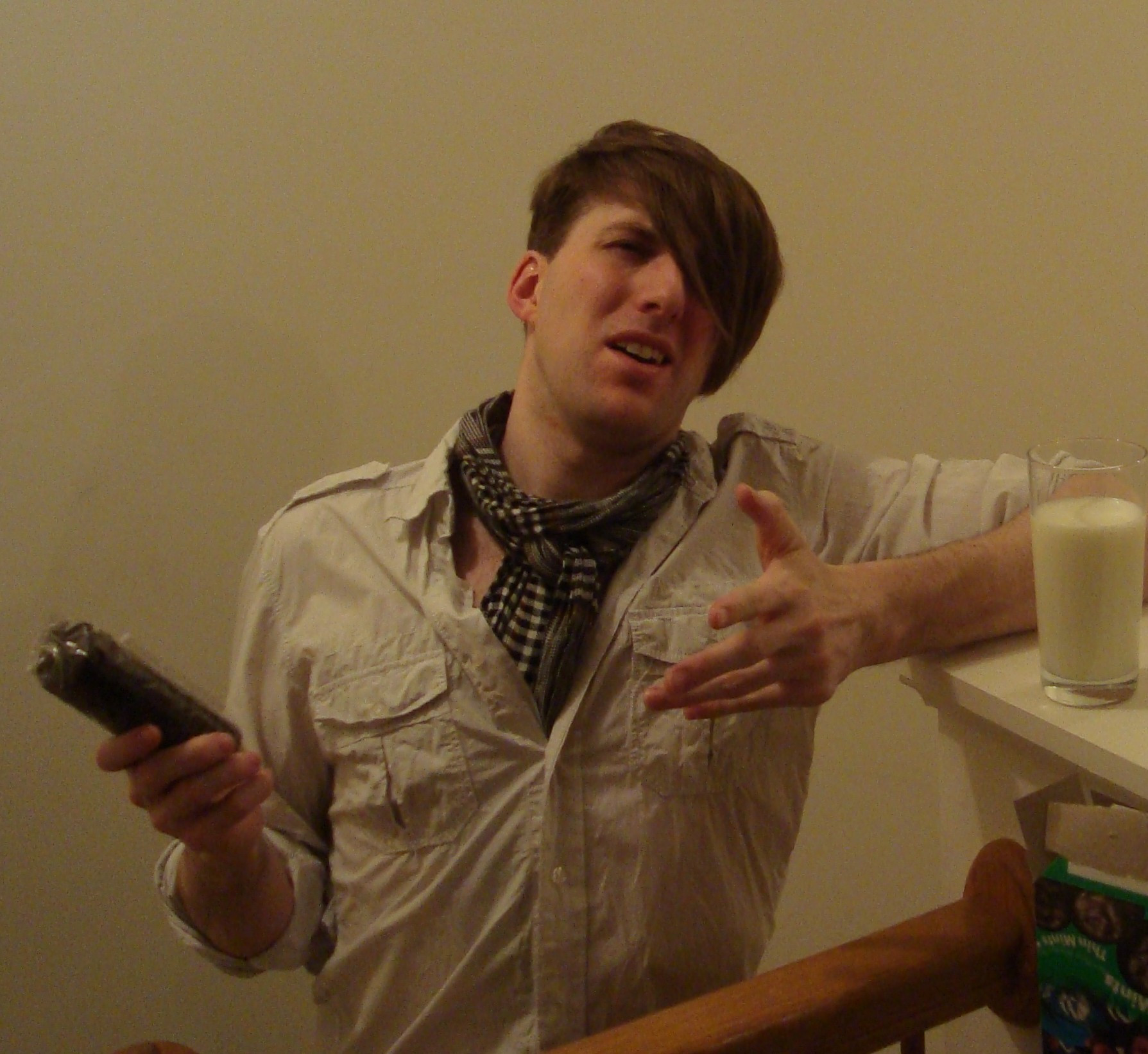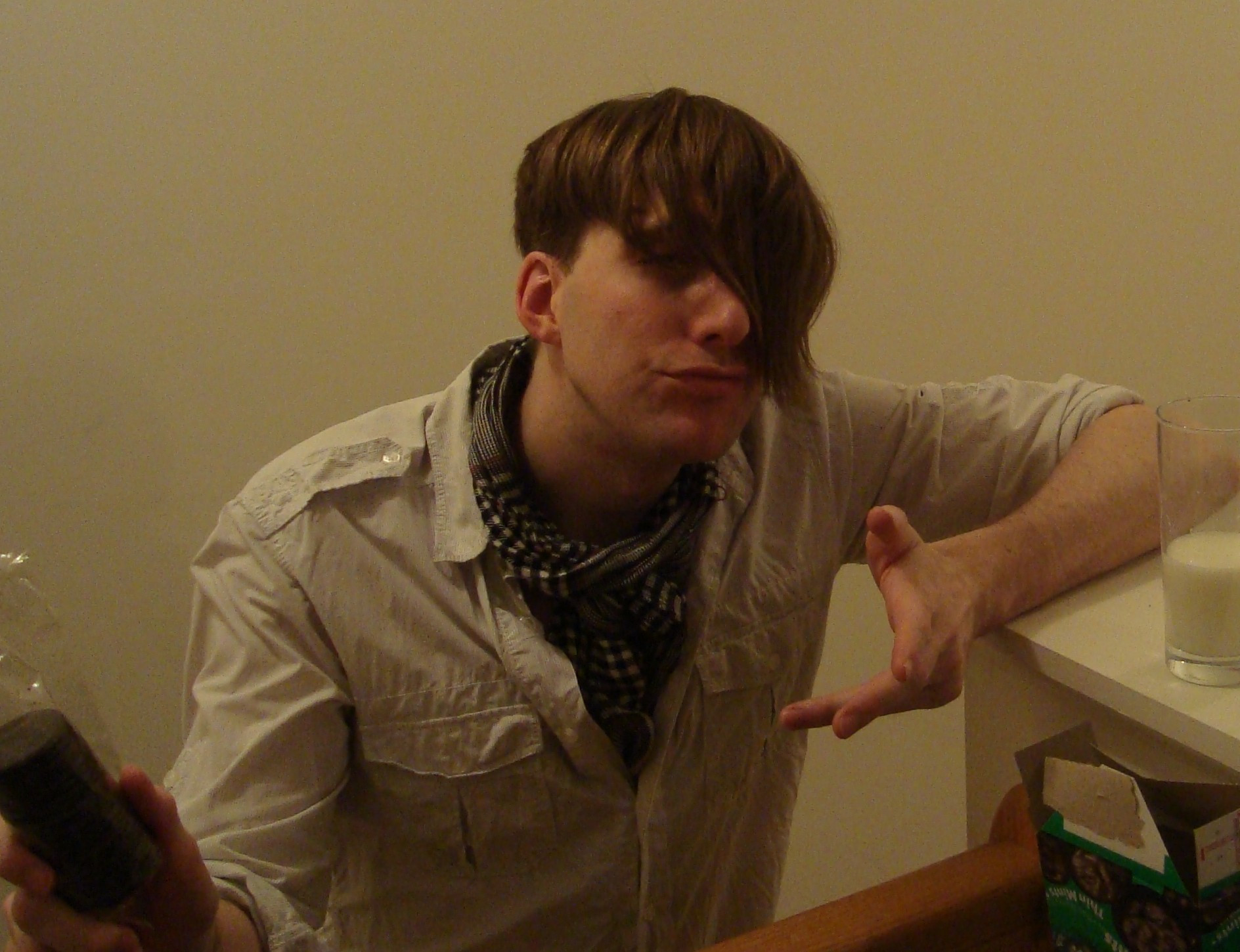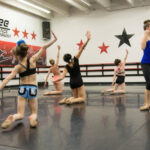The swing dance scene is a vibrant community, full of energy and debate. Here at ten-dance.com, we delve into the heart of these discussions. Today, we launch a new series, The Great Debate, to explore some of the intriguing questions that spark lively conversation within our dance community. We aim to present different perspectives on these sometimes puzzling arguments. And we want to hear from you! Share your opinions in the comments or on your own blogs – let’s keep the discussion respectful and engaging. If you have a debate topic you’d love us to explore, email us at [your email address].
Let’s kick off our series with a fundamental question that often arises on the dance floor:
Should Lindy Hop Be Danced to Music Beyond Swing?
By Robert White, a Curious Mind in the Dance World
 Mr. No Begins the Debate
Mr. No Begins the Debate
The Case Against: Sticking to Swing
The foundation of almost every dance form is intrinsically linked to the music that birthed it. Consider the origins of dance – music inspires movement, rhythm dictates steps. This holds true for Lindy Hop.
It’s a common experience for those new to Lindy Hop to discover a wide range of music and excitedly declare, “We can Lindy Hop to this!” This enthusiasm is understandable and a natural part of exploring the dance. It often stems from the fact that Lindy Hop might be the first partnered social dance someone learns. Fueled by a love for music, they naturally want to express themselves through dance to their favorite tunes, using the dance vocabulary they know – Lindy Hop.
However, many musical genres already have dances that evolved organically alongside them, perfectly capturing their essence. Hip Hop music, for instance, has Hip Hop dance. Trying Hip Hop dance to Hip Hop music reveals a far more authentic and satisfying expression than attempting to force Lindy Hop into its mold.
Lindy Hop was specifically created to embody swing music. It’s in swing music that Lindy Hop truly lives and breathes. And this principle, in my view, extends to Charleston music as well. While historically connected, Lindy Hop shouldn’t be danced to Charleston music. Charleston already possesses its own distinct dance form, perfectly suited to Ragtime and Dixieland rhythms. Furthermore, it feels anachronistic to Lindy Hop to music that often predates Lindy Hop’s emergence by a decade or more.
Frankie Manning, a Lindy Hop legend, emphasized this connection in Ken Burns’s Jazz, Episode 4. He stated, “Lindy Hop itself is done to swing music. If you know what a swing is, it’s very smooth and it flows…before that you were doing Charleston.” Many other original Lindy Hoppers, like Dean Collins and Norma Miller, echoed this sentiment – swing rhythm is integral to Lindy Hop.
This isn’t to suggest rigidity in Charleston steps when dancing to pre-1930s music. Charleston can be personalized and evolved with new moves and styles. However, the fundamental point remains: Charleston music is best expressed through Charleston dance, emphasizing vertical rhythm and limited horizontal movement, mirroring the music itself. Crucially, Lindy Hop, as we know it today, developed its foundation specifically for swing music – music with swung rhythms from the early to mid-1930s onwards.
Attempting to shoehorn Lindy Hop into other musical forms is akin to misusing a tool. It’s like using a sports car to haul lumber when a perfectly capable truck is readily available. Each dance and music genre has its ideal partner.
 Mr. Yes Counters the Argument
Mr. Yes Counters the Argument
The Case For: Embracing Musical Diversity in Lindy Hop
But hold on, isn’t Lindy Hop, at its heart, a street dance? Street dances are known for their evolution and adaptability, not rigid rulebooks dictating what music is permissible. To say “You can’t dance Lindy Hop to other music” feels restrictive and against the spirit of its origins. Legend has it that Frankie Manning himself demonstrated how to Lindy Hop to a Hip Hop song, inspiring Steven Mitchell to create “Hep Hop” steps and even music.
Dance is about joy, pure and simple. Why limit that joy by dictating the soundtrack? Restricting musical choices could stifle the very growth of Lindy Hop. Pushing boundaries, stepping outside the comfort zone, is often the catalyst for innovation. Dancing to different music genres could spark new moves, variations, and ultimately enrich Lindy Hop, even when returning to its swing roots.
Furthermore, the Lindy Hop scene is already a niche within the larger world of partnered dance. Imposing strict rules about musicality risks alienating potential dancers, those who resist ballroom-like regulations in their social dancing. Creativity thrives in freedom, not restriction.
While professional Lindy Hoppers may prioritize strict authenticity, focusing solely on swing jazz, the majority of the swing scene is comprised of people who dance for the sheer enjoyment, for social connection, and not for professional expression. Even seasoned professionals often embrace musical variety, as seen in many crossover Jack and Jill competitions.
We, as a modern dance community, are also exposed to a far wider spectrum of music than the original Lindy Hoppers. It’s common to experience a Charleston band one night, a swing band the next, and a Blues band after that. This musical diversity makes it arguably more natural for us to expand the dance’s horizons. For the original Lindy Hoppers, their musical landscape might have been more limited in dance halls, perhaps only swing music alongside Waltzes and Latin numbers.
Regarding Charleston music specifically, many skilled dancers have successfully adapted their rhythm and movement vocabulary to dance Lindy Hop to Charleston tunes, achieving beautiful and musically resonant results. The same adaptation has been happening with Soul music recently.
One of Lindy Hop’s strengths lies in its adaptable foundation. Its lead-and-follow mechanics, its allowance for individual expression, and its 8-count structure can be creatively adapted to support different musical forms.
Returning to Charleston, it’s important to remember that Charleston rhythms evolved into swing music, and Charleston dance paved the way for Lindy Hop. Therefore, it isn’t a radical idea to “devolve” Lindy Hop, to revisit its roots and adapt some of its modern movements to create a style of Lindy Hop that complements Charleston music.
Moreover, the spectrum of “transitional jazz” songs blurs the lines between Charleston and Lindy Hop, making a rigid “swing-only” policy impractical. Consider Fats Waller’s “24 Robbers.” It’s difficult to definitively categorize Skye and Frida’s routine to this song as not being “Lindy Hop.”
(Mr. No interjects: While the piano in “24 Robbers” often plays a Charleston rhythm, the snare brushes oscillate between a Charleston and a swing rhythm. Fats Waller defies easy categorization.)
(Mr. Yes retorts: I didn’t interrupt your argument, Mr. No, please maintain the same courtesy.)
So, where do we draw the line? When does a song become “too Charleston” for Lindy Hop? The answer, I believe, lies in the dancers’ connection to the music. If people feel moved to dance Lindy Hop to a particular song, who are we to say they shouldn’t? To illustrate, consider this routine:
A brief aside: This routine by Jeff and Liz is a perfect example. It beautifully concluded the Lindy Focus showcase contest, an event known for its positive spirit. The video doesn’t fully capture the standing ovation the dancers received from the entire room, judges included. Many were moved to tears. The flash mob element was a complete surprise to everyone not involved, with a third of the audience suddenly joining the dance floor mid-routine.
This performance generated immense joy, fostered a sense of community, and undoubtedly inspired many to dance. To me, that embodies the essence of Lindy Hop. Therefore, in my view, it is Lindy Hop, even with its unconventional music choice.
 Mr. No Remains Unconvinced
Mr. No Remains Unconvinced
The Counter-Argument: Defining the Boundaries of Lindy Hop
I understand the anecdote about Frankie Manning dancing to Hip Hop. However, my understanding is that Frankie did so to demonstrate that the specific Hip Hop song he chose shared rhythmic similarities with swing. And indeed, much of Soul music shares a close rhythmic kinship with swing. However, I still maintain that adapting Lindy Hop to significantly different music requires such substantial alterations that it essentially becomes something else.
If you were to perform standard “Lindy Hop” steps to Soul music without modification, it would likely feel incongruous. Instead, what often emerges is a hybrid – a blend of Lindy Hop lead-and-follow principles with elements of West Coast Swing and Soul dance.
Therefore, perhaps a more nuanced perspective is needed. Instead of saying “You can’t dance Lindy Hop to non-swing music,” perhaps the more accurate statement is: “You can adapt Lindy Hop steps to non-swing music if you wish, but at that point, it transcends the boundaries of Lindy Hop itself.”
This distinction is reinforced by the prevalence of swing music in almost all international-level Lindy Hop competitions. While some competitions may occasionally use music with a more Charleston-like rhythm, this might reflect the broader popularity of Charleston music within the scene, rather than a conscious re-evaluation of whether Lindy Hop danced to Charleston music remains “Lindy Hop.”
The Blues dance scene offers an interesting parallel. Blues dancers utilize many Lindy Hop mechanics but recognize their dance as distinct, evolved specifically for Blues music. They call it Blues, not “Slow Lindy Hop” (which is merely a small subcategory within Blues dance).
Therefore, while a performance like the one Mr. Yes highlighted can be charming, well-executed, and imbued with a positive spirit – all qualities valued in Lindy Hop – dancing to a Reggae-infused Pop rhythm fundamentally removes the swing rhythm from the dance. In my view, this makes it technically not Lindy Hop. The inspirational quality of the routine, I argue, stems from its skillful movement and storytelling, not necessarily from its adherence to Lindy Hop as a defined dance form.
Such a performance, in this light, could be considered an artistic or theatrical piece, an exploration of Lindy Hop beyond its traditional foundations. It would be perfectly suited for a Cabaret competition. And, I certainly wouldn’t want to be the act following Jeff and Liz’s performance at Lindy Focus IX!
 Mr. Yes Holds His Ground
Mr. Yes Holds His Ground
The Rebuttal: The Evolving Definition of Lindy Hop
The very fact that Charleston music is often used in Lindy Hop competitions demonstrates a degree of openness within the scene to expanding the musical boundaries of Lindy Hop beyond a strict “swing-only” definition. This implies that not everyone believes Lindy Hop is inextricably linked to swing music alone. If we accept Charleston music as sometimes permissible, then we should be open to any music that inspires someone to dance Lindy Hop.
If a rigid definition of Lindy Hop is paramount, then perhaps competitions should explicitly define their criteria. For clarity and fairness, a competition could be billed as “A Lindy Hop Contest danced to swing music from 1935 to 1945, between 180 BPM and 250 BPM.”
Otherwise, the definition of Lindy Hop is shaped by its practitioners, by us, the dance community as a whole. While Frankie Manning’s insights are invaluable, he isn’t the sole authority on defining Lindy Hop. A century from now, “Late-2000s Style Lindy Hop” might emerge, and future generations might perceive our era’s Lindy Hop as a dance done to early jazz music of various kinds.
Your Voice in the Debate
What are your thoughts? What aspects of this debate have we overlooked? Where do you see this discussion going? What are your points of agreement and disagreement? What are the potential flaws in these arguments? Are there alternative perspectives to consider? We encourage you to join the conversation!
A Note on West Coast Swing and Musical Identity
This debate, while interesting, might be considered relatively minor within the modern Lindy Hop scene. However, the West Coast Swing community has been grappling with a more profound identity crisis for years.
West Coast Swing’s “swing” element originated from Western Swing and Rhythm and Blues music. However, contemporary West Coast Swing choreography often lacks discernible swung rhythms. A younger generation has largely embraced contemporary popular music. This shift has led to ongoing questions about whether contemporary West Coast Swing retains its core identity and whether it can still be considered a “swing” dance.
My perspective, for what it’s worth, is that the musical divergence between contemporary Pop and classic Rhythm and Blues is so significant that dances catering to each warrant separate competitive categories. Major events could potentially feature both “Classic West Coast Swing Music” competitions and “Contemporary” competitions, at least for advanced dancers. Lower-level competitions could perhaps incorporate a musical mix. However, implementing this within existing points systems and already packed event schedules would be complex. This idea has likely been considered, and there may be valid reasons why it hasn’t been adopted. Or perhaps, contemporary music has simply become the dominant preference? Does this mean the end of harmonica-driven West Coast Swing anthems? (Is there a “Splanky” equivalent in West Coast Swing? Mary Ann Nunez is undeniably a force!)
If West Coast Swing fully embraces contemporary music, perhaps the Lindy Hop scene can reclaim the exclusive use of the term “Swing dance.”
——————————————————————————————————————————————————————
*— Interestingly, the Blues dance scene is also experiencing similar debates about musical boundaries.
**—And yes, the jokes about imitating Skye Humphries are easy to make. I promise to refrain, as the scene is evolving beyond imitation, with many original voices emerging.
Skye Humphries is undeniably a phenomenal Lindy Hopper, one of the greatest artists of this generation. However, his style is so distinct that direct imitation, rather than inspiration, often falls short. It’s like the difference between Billie Holiday drawing inspiration from Louis Armstrong and a mere Louis Armstrong impersonator. Which would you rather listen to? Which dancer would you rather be?
However, in the spirit of debate, imitation can be a valuable learning tool for artists. It allows dancers to step into another’s shoes, to understand their approach. The problem arises when imitation replaces the development of one’s own unique voice.
And let’s be honest, we’ve all attempted a Skye-esque move or even an entire Skye-inspired dance at some point. Or at least, I have. But this tangent is diverting us from the main debate. End of footnote.
Special Thanks to David Lee, champion debater and lawyer, for his insightful feedback on this post.
Share this:
Like Loading…


